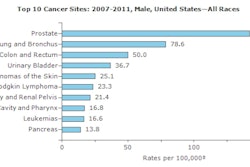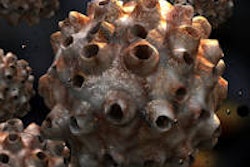Dear Oral Cancer & Diagnostics Insider,
With growing rates of oral cancer, more patients are dealing with the debilitating side effects of treatment with radiation and chemotherapy. In the latest installment of the Leaders in Dentistry series, we interviewed Elizabeth Feldman, DMD, a maxillofacial prosthodontist and dental oncologist at the University of Florida Cancer Center Orlando, about one of the most common complications of radiation therapy for patients -- mucositis -- which can drastically impair a patient's ability to swallow, talk, and eat.
Read about Dr. Feldman's treatment options in this latest Insider Exclusive.
In a related story in the Oral Cancer & Diagnostics Community, international researchers studied whether radiation therapy (RT) alone is as effective as RT combined with chemotherapy in decreasing swallowing complications in patients with advanced esophageal cancer. Click here to read about their findings, which were presented at this week's meeting of the American Society for Radiation Oncology (ASTRO) in San Francisco.
Meanwhile, injuries, birth defects such as cleft palates, or surgery to remove a tumor can create gaps in bone that are too large to heal naturally. And when they occur in the head, face, or jaw, these bone defects can dramatically alter a person's appearance.
Now, researchers at Texas A&M University have developed a "self-fitting" material that expands with warm salt water to precisely fill bone defects while acting as a scaffold for new bone growth. Read about the shape-memory polymer innovation that was outlined at a recent meeting of the American Chemical Society.
Also, with growing rates of human papillomavirus (HPV)-related oral cancer, a free, federal HPV vaccination program for adolescent boys and girls would save billions of dollars in medical costs and help prevent oropharyngeal cancers, according to a new policy brief by the Center for Oral Health. Click here to read about the group's recommendations for the HPV vaccine, which the Centers for Disease Control and Prevention agrees could prevent most oropharyngeal cancers in the U.S.
In another related story, Johns Hopkins researchers have developed blood and saliva tests that can accurately predict the recurrence of HPV-related oropharyngeal squamous cell carcinoma. Read about the role of HPV type 16 in the study, which was outlined recently in JAMA Otolaryngology -- Head & Neck Surgery.
In another HPV-related story, Duke University researchers have hijacked a defense system normally used by bacteria to fend off viral infections and redirected it against HPV. Click here to read how they used a genome editing tool to selectively destroy viral genes responsible for the growth and survival of cervical carcinoma cells. Their findings were recently published in the Journal of Virology.
And earlier research shows that high death rates among head and neck cancer (HNC) patients usually occur only when mutations in the tumor-suppressor gene coincide with missing segments of genetic material on the cancer genome's third chromosome. Now, researchers have found evidence suggesting that the deleterious health effects of the mutated gene may be caused by other genetic abnormalities. Click here for details of the study which was published recently in Nature Genetics.
In other news, the risk for HNC is almost 50% higher in patients with a disease that is now reaching epidemic rates worldwide. Researchers analyzed insurance claims data for millions of Taiwanese to estimate which comorbidities and risk factors are found among HNC patients, in a new study in JAMA Otolaryngology -- Head & Neck Surgery. Read about their findings here.
And researchers at the Fred Hutchinson Cancer Research Center used a technique that looks for genes that tumor cells need to survive to find a potential new drug for a class of difficult-to-treat head and neck cancers. Click here to read about their study, which looked at cells from a type of HNC that harbored mutations in the tumor-suppressor gene p53, outlined recently in Clinical Cancer Research.
Finally, Australian researchers have developed a quick, low-cost blood test to detect the early signs of oral cancer. Read about the diagnostic test, which can be administered by healthcare providers to screen microRNA to reveal oral cancer's early warning signs, and can be done at the same time as other routine checks, such as for cholesterol.



















